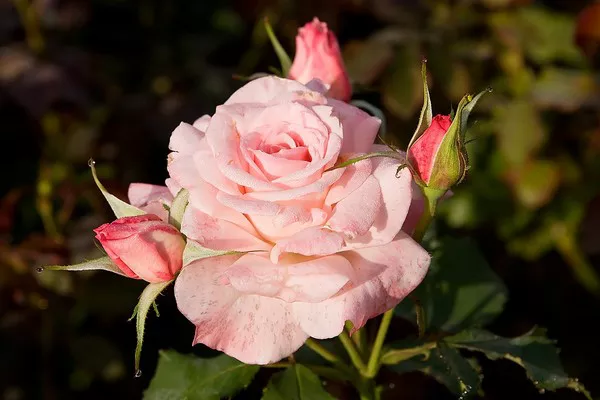When it comes to creating a vibrant and enduring garden, perennial flowers are a favored choice among gardening enthusiasts. These versatile plants offer beauty, color, and texture year after year, making them an essential element in any garden design. In this article, we delve into the captivating world of perennial flowers, exploring their characteristics, benefits, and some of the most popular options for your garden.
Understanding Perennial Flowers: Nature’s Timeless Beauties
Perennial flowers are plants that live for more than two years, with their lifecycle extending beyond a single growing season. Unlike annuals, which complete their lifecycle in a year, perennials have the remarkable ability to regrow and bloom anew each spring. This enduring nature makes them an ideal choice for gardeners seeking a long-lasting, low-maintenance garden.
Benefits of Perennial Flowers
1. Sustainable Beauty: One of the most compelling benefits of perennial flowers is their sustainability. Once established, they require less replanting, conserving time and resources in the long run.
2. Cost Efficiency: While the initial investment might be slightly higher compared to annuals, perennials offer a higher return on investment over time as they continue to bloom for several years.
3. Ecosystem Support: Many perennial flowers attract pollinators, such as bees and butterflies, contributing to a healthier ecosystem and promoting biodiversity.
4. Texture and Variety: Perennials come in a wide range of sizes, shapes, and colors, allowing gardeners to create dynamic landscapes with varying textures and heights.
Popular Varieties of Perennial Flowers
1. Roses (Rosa spp.)
Roses are often considered the epitome of perennial beauty. With their timeless elegance and captivating fragrance, they have enchanted gardeners for generations. From climbing roses to shrub varieties, these flowers offer a diverse range of colors and shapes, making them a versatile choice for various garden styles.
2. Lavender (Lavandula spp.)
Lavender’s delicate purple spikes and soothing aroma make it a favorite among gardeners and herbal enthusiasts alike. Known for its drought tolerance and ability to attract pollinators, lavender is a must-have perennial for creating fragrant borders or relaxation corners in your garden.
3. Daylilies (Hemerocallis spp.)
Daylilies are renowned for their stunning and diverse blooms that last for just one day, but numerous buds ensure a continuous show of color throughout their blooming season. Their adaptability to different climates and soil types makes them a popular choice for both novice and experienced gardeners.
4. Peonies (Paeonia spp.)
Peonies are beloved for their large, lush blooms that come in an array of shades, from delicate pastels to vibrant reds. Their longevity, sometimes spanning decades, adds a sense of tradition and permanence to any garden.
5. Coneflowers (Echinacea spp.)
Coneflowers are not only visually appealing with their distinctive cone-shaped centers but also play a crucial role in supporting pollinators. These rugged plants are known for their ability to thrive in various soil conditions, making them a resilient choice for gardeners aiming to attract wildlife.
6. Black-Eyed Susans (Rudbeckia spp.)
With their golden-yellow petals and dark centers, Black-Eyed Susans bring a touch of warmth to any landscape. These sun-loving perennials are easy to care for and are often used to create cheerful borders or wildflower meadows.
Cultivating a Thriving Perennial Garden
While perennial flowers offer longevity and resilience, a successful perennial garden requires thoughtful planning and maintenance.
1. Site Selection and Preparation
Choose a location that receives the appropriate amount of sunlight for the specific perennial varieties you intend to plant. Prepare the soil by incorporating organic matter to improve drainage and fertility.
2. Planting Techniques
When planting perennials, ensure that the root ball is level with the soil surface. Water thoroughly after planting and consider applying a layer of mulch to conserve moisture and suppress weed growth.
3. Watering and Fertilization
Watering needs vary among perennial species. Be sure to water newly planted perennials regularly until they establish roots. Once established, many perennials are drought-tolerant, but consistent moisture during blooming periods is essential for optimal flower production. Apply a balanced fertilizer in the spring to support healthy growth.
4. Pruning and Deadheading
Regular deadheading (removing spent flowers) encourages continuous blooming and prevents the plant from focusing energy on seed production. Pruning should also be done to remove dead or damaged growth, typically in the early spring or late fall.
5. Dividing Perennials
Over time, some perennials may become overcrowded, leading to reduced blooming. Dividing plants every few years can rejuvenate them and promote better growth. Spring or fall is typically the best time for division.
Conclusion
Perennial flowers stand as nature’s timeless beauties, offering year after year of vibrant blooms and enduring landscapes. With their diverse range of colors, textures, and sizes, they provide an essential foundation for any garden style. From the classic elegance of roses to the hardiness of coneflowers, each perennial variety brings its unique charm to the outdoor space.
When embarking on your journey of cultivating a perennial garden, remember that while these plants are hardy and long-lasting, they still require care and attention. By selecting the right varieties, providing proper maintenance, and creating an environment conducive to their growth, you can enjoy a garden that blooms and thrives for seasons to come. So, whether you’re an experienced gardener or a novice with a green thumb, the world of perennial flowers welcomes you to explore its captivating and enduring beauty.


